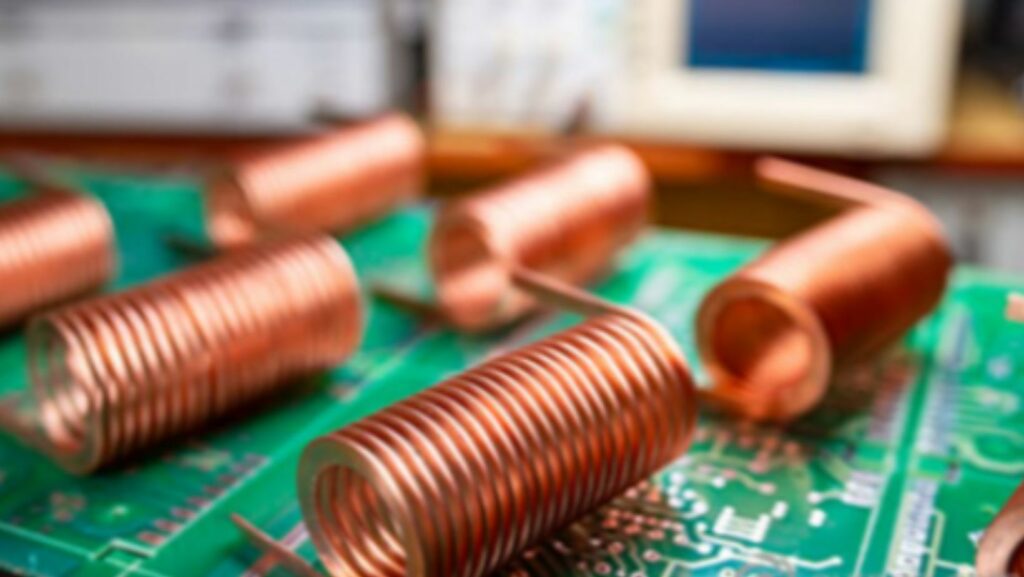
High-frequency PCBs are crucial for high-speed signal transmission applications, such as telecommunications, aerospace, and advanced computing. Understanding the impact of design on these PCBs is essential for optimising their performance and ensuring reliable signal integrity. For more detailed information on high-frequency PCBs, you can visit high frequency on OurPCB’s website.
Key Factors in High-Frequency PCB Design
-
Material Selection
- The choice of materials for high-frequency PCBs significantly impacts signal transmission. Materials with low dielectric constants and minimal loss tangents, such as PTFE (Teflon) and ceramic-filled laminates, are preferred. These materials help maintain signal integrity by reducing signal loss and distortion.
-
Layer Stackup
- Proper layer stackup design is critical for high-frequency PCBs. It involves arranging multiple layers of conductive and dielectric materials to achieve the desired electrical performance. Careful layer stackup design manages controlled impedance, which is crucial for high-frequency signal transmission.
-
Trace Width and Spacing
- The width and spacing of traces on a PCB affect signal transmission. High-frequency signals are more susceptible to interference and crosstalk. Therefore, maintaining appropriate trace width and spacing helps minimise these issues. Using wider traces can also reduce signal loss and impedance variations.
-
Controlled Impedance
- Controlled impedance is vital for high-frequency PCBs to ensure consistent signal transmission. It involves designing traces and their surrounding dielectric materials to achieve a specific impedance value. This reduces signal reflections and losses, enhancing overall performance.
-
Signal Path Length
- Minimising signal path lengths is essential for high-frequency PCBs. Longer signal paths increase the risk of signal degradation and delay. Designers must optimise the layout to keep signal paths as short and direct as possible, improving signal integrity.
Advanced Design Techniques
-
Via Design
- Vias connect different layers of a PCB. In high-frequency designs, vias can introduce signal loss and reflections.
- Techniques such as back drilling, where unnecessary via stubs are removed, can improve signal quality.
-
Ground Planes
- Incorporating continuous ground planes in the PCB design helps reduce electromagnetic interference (EMI) and crosstalk.

Ground planes provide a return path for signals and help stabilise the impedance.
- Incorporating continuous ground planes in the PCB design helps reduce electromagnetic interference (EMI) and crosstalk.
-
Differential Pair Routing
- Differential pair routing is used for high-speed signal transmission. It involves routing two complementary signals, which helps cancel out noise and improve signal integrity. This technique is commonly used in high-frequency applications like USB, HDMI, and Ethernet.
-
Shielding
- Shielding techniques, such as using metal layers or enclosures, can protect high-frequency signals from external interference. Effective shielding is crucial in environments with high EMI.
FAQs About High-Frequency PCBs
- What materials are best for high-frequency PCBs?
Materials with low dielectric constants and low loss tangents, such as PTFE (Teflon) and ceramic-filled laminates, are ideal for high-frequency PCBs.

- Why is controlled impedance important in high-frequency PCB design?
Controlled impedance ensures consistent signal transmission by minimising signal reflections and losses, which is crucial for maintaining signal integrity at high frequencies.
- How does trace width affect high-frequency signal transmission?
Wider traces reduce signal loss and impedance variations, helping maintain signal integrity. Proper spacing between traces also minimises interference and crosstalk.
- What is the role of ground planes in high-frequency PCBs?
Ground planes reduce electromagnetic interference (EMI) and crosstalk by providing a stable return path for signals and maintaining consistent impedance.
- How can via design impact high-frequency PCB performance?
Improper via design can introduce signal loss and reflections. Techniques like back drilling to remove unnecessary via stubs can improve signal quality and performance.



